by: Mildred Anekeya April 29th, 2013 comments:
The 24th UN HABITAT Governing Council (GC24) was held at the UN Complex Nairobi under the theme ‘sustainable urban development’, on the roles of cities in creating improved economic opportunities for all, with special reference to youth and women. The governing council serve as the intergovermental decision making body for UN-Habitat. The meeting was officially opened by newly elected Uhuru Kenyatta who emphasized youth and employment. He said youth issues are sidelined, and few are willing to talk about them, especially the need for youth to access information and employment.
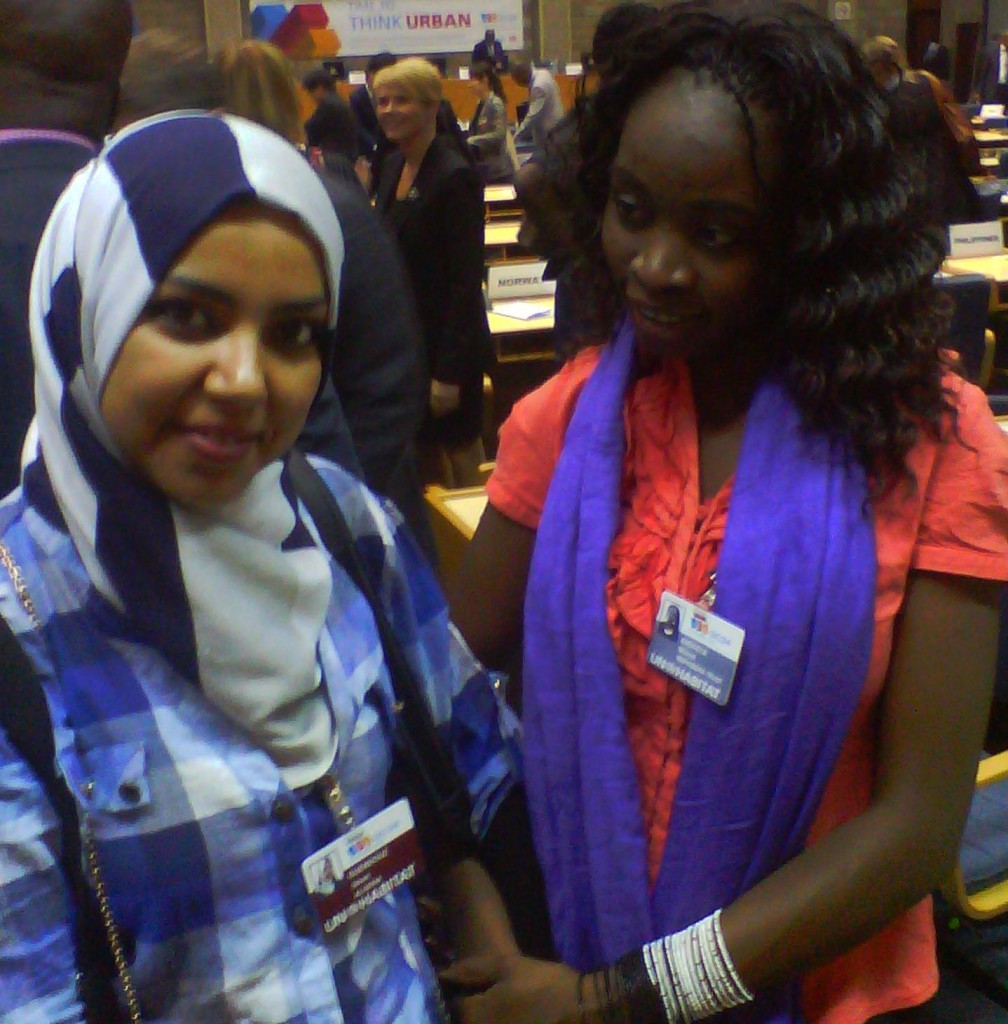
Map Kibera Trust was privileged to participate, due to our work under the UN Habitat Youth Fund. We especially contributed to discussions in on the issues of ‘Safer Cities’ and environmental issues. Safer Cities encourages design at the level of local authority decision and policy making, focused on the most vulnerable, women and girls in the community. I presented how Map Kibera approaches the issue of security, one of our themes that has most impressed people in the community. I discussed the map and how it’s used for awareness with young ladies. The response was positive!
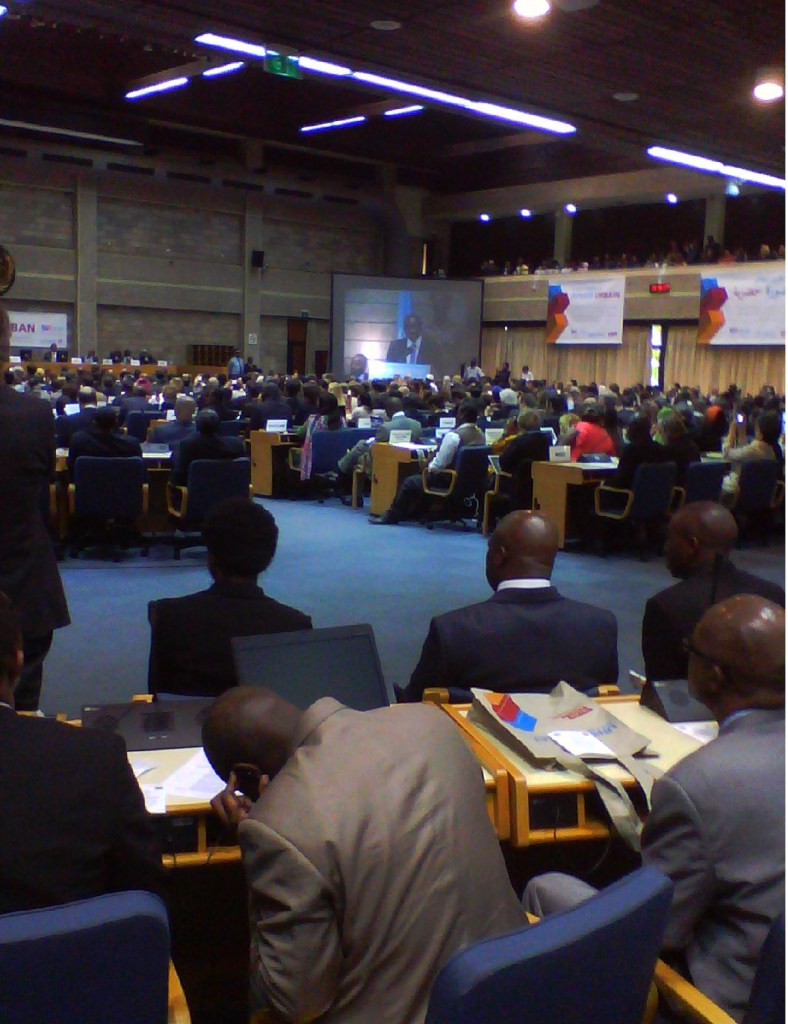
The rest of the youth discussion was engaging. A platform for discussion was held where young people went to enlighten each other on ideas to create jobs. A youth from Kibera and a member of Youth Advisory Board (YAB) presented, really helped us understand the issue by defining six points towards understanding job creation: E-ducation Everyone should be educated. E-xchange Exchange ideas towards job creation. E-mployment creation From the exchange of ideas, it will give you ideas on how to create jobs. E-quity After creating jobs you provide equal opportunity to everyone. E-mployment Everyone gets employment in the community. E-nterpreneuaship Everyone should market him/herself, especially using we should use ICT.
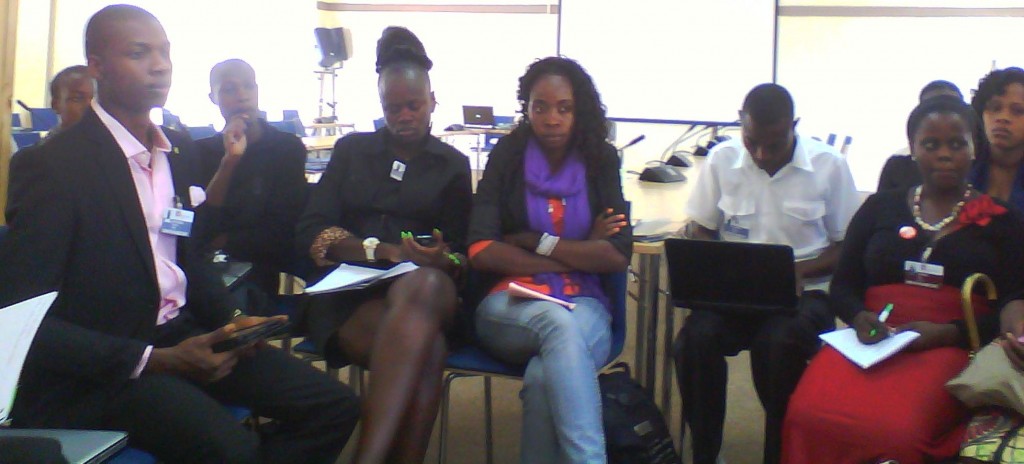
The Youth Caucus on the last day focused on youth inclusion. Youth shared real issues that affect them, issues that are sidelined, that no one is willing to talk about. When youth are enlightened they can focus on what they need and move forward. In contrast, a delegate from Uganda came out differently and said youth are there own enemies, they don’t think beyond financial issues. She encouraged youth to think about the long term, and address negative attitudes towards volunteering.
by: Sande Wycliffe December 3rd, 2012 Comments Off on Voice of Kibera takes awareness of its platform to Mashinani “Grassroots”
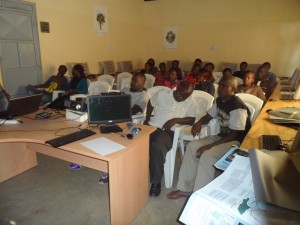
An Attentive Audience at the Meet-up
Introduction:
“I want to play a pivotal role in updating and sharing community generated information with the community and the world at large through citizen journalism. I say so because I witnessed an incident a few months ago during the oil shortage problem, where a CNN journalist came to Kibera slums and paid a woman stage manage some kind or a demonstration saying the price of Paraffin had gone up as he recorded her. I would like to know more about www.voiceofkibera.org so that I can challenge the perceptions and misrepresentations that Kibera goes through.†This was what Ann one of the participants had to say during the introductions session at the meet-up.
Before then, Map Kibera Trusts’ Voice of Kibera had organized a presentation in Soweto East village to engage the youth group leaders more on how they can get engaged with the platform. Having invited 30 representatives, 22 were able to turn up for the event that started at about 2:15pm on Saturday the 1st of December.Â
Preparations for the day:
Adequate arrangements by the V.O.K team were made to ensure that the days program would run smoothly hence achieving its purpose. Below was the program flow.
- Introduction of the entire Map Kibera Trust and Voice of Kibera.
- The relationship between Map Kibera Trust programs.
- The Voice of Kibera platform and how it works, what the participants think can be improved.
- Question and Answer time to enable a brain storming session for better understanding.
- Distribution of Maps on 3 themes; Education, Health and security to the line organizations that attended.
- Refreshment and Networking
- Conclusion
The voice of Kibera Presentation:
This was a step by step presentation done with Fredrick, one of the Map Kibera trust members. I could feel the mood in the hall, one with silence meaning the participants were keenly taking in what was being said. Some of the details that were shared are; How to submit a report, The ways with which you can send the report to the website, the details and importance of categories, editing, proof reading and approving or reports among others.
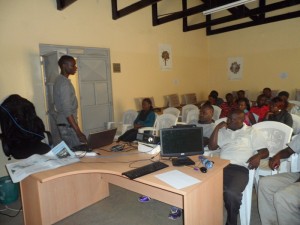
Fredrick Doing the Presentation in Soweto East
After the session Sande took over to reinforce what had been discussed even as he led the question and answer time.
Some of the questions:
- How do you ensure authenticity of the reports you collect?
- Now that we have new boundaries, what is your organization doing to that effect?
- Do you have anywhere you advertise jobs for the youths in the slums?
 Our Response to the Questions:
That when you have a report and you are not sure about its’ contends, you can get call back the person who send it to get more clarification, if the news has been covered by a 2nd or 3rd parties you can use that as well as using your available networks to get confirmation or more information on the same. Map Kibera is currently remapping the new boundaries by IEBC including information on the location of polling stations so that this information can be available to the locals before the elections in March 2013. We are developing a plartform under the name organizational directory that will see advertisement of opportunities a reality in the sense that those who consume contend do it for free apart from profiling organizations in Kibera on the Platform.
The meet-up that took close to 3 hours came to an end with the p
by: mikel July 1st, 2012 comments:
Raoul Klapp, a geography teacher at the Athénée de Luxembourg, a secondary school in the Grand-Duchy of Luxembourg, got in touch earlier this year to discuss his lesson plans for his geography class.
I was amazed by the work that the team has carried out and by this pioneering idea in slum GIS cartography. Since I teach a so-called ‘netbook class’, a pilot-project in Luxembourg, in which each student uses a netbook as a digital enhancement to conventional classroom activity, Map Kibera, through its webpage and lively blogs, convinced me that it could be an amazing opportunity to provide my students with a hands-on, real-world geography/GIS experience and show them how people could raise national and international awareness.
As we were already covering the issue of sustainable (urban) development in class, my 10th grade students (aged 15-17) expressed great interest in getting involved in Map Kibera and doing research on amenities present in Kibera by using GIS software (QGIS) with the perspective on doing their part in helping the people and community of Kibera and the Map Kibera team.
Awesome! All the data Map Kibera collects is available in OpenStreetMap, and extracts downloadable. So, combined with stories published on Voice of Kibera, Kibera News Network, and other sources on the web, the students were able to use both open data and open source software in their class. Such a collaboration could easily be replicated with other schools … especially right here in Kenya!
Last week, Raoul shared the results.
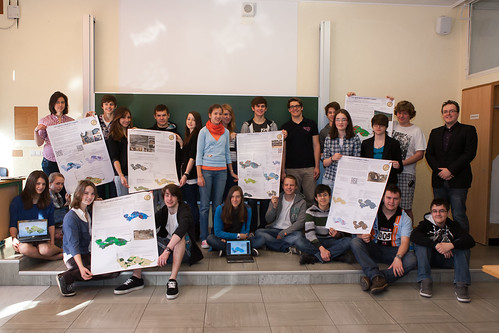
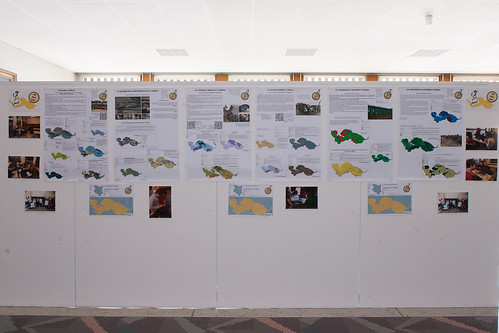
My students enjoyed doing the work a lot! I am currently evaluating their feedback – seems strikingly positive so far.
They very much liked the fact that they could help out *real* people with an issue connected to the *real* world an not only doing arts for arts’ sake.
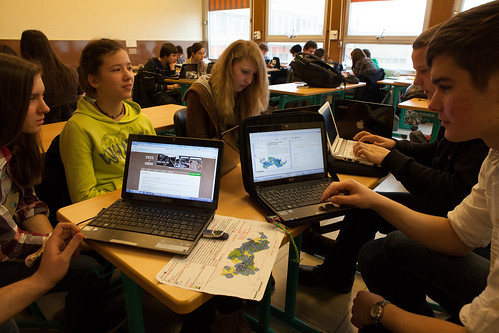
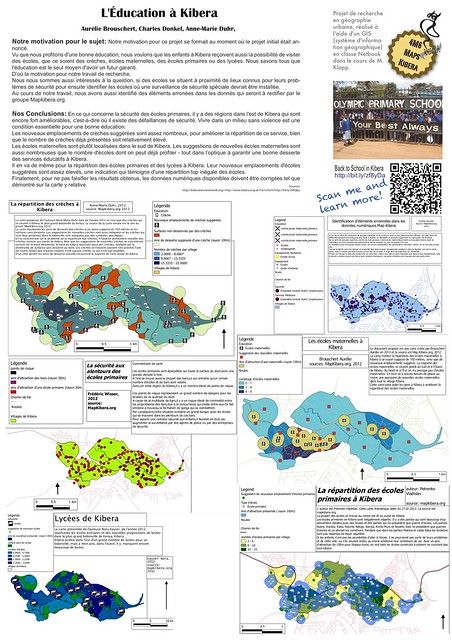
All of the student posters, and photographs, can be accessed on dropbox. They are mostly in French; going to look into printing out a couple for the walls of the Map Kibera office.
Next Semester
The class project received positive feedback from all, so is developing further in the next school year. Our suggestion is to focus on other parts of Nairobi, like Mukuru and Mathare, where Map Kibera has initiated new mapping efforts, and where there is much less attention generally than Kibera.
It’s exciting that young people from very different parts of the world, from the slums of Nairobi, and the classrooms of Luxembourg, can collaborate so easily with today’s technology. There is so much opportunity for this to expand, to other classrooms and other cities. Map Kibera welcomes more chances to connect. Hoping the students from Luxemborg join Map Kibera’s Facebook group and make friends with the team here.
Very much worth pointing out that there is no reason at all the collaboration needs to be so distant. It’s likely that these students now know more of the facts about life in Kibera than most Kenyans! Several conversations this week in Nairobi show growing interest in substantial technological engagements in the classroom. Perhaps the curriculum Raoul is developing could be shared and jointly developed with Kenyan classrooms, and lead to connections right here across the country.








